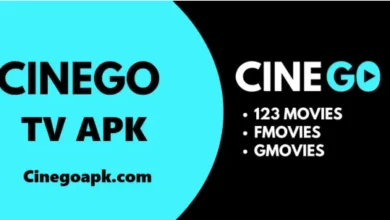Outline the Steps: Decode Daily Media Messages Effectively

To analyze media messages, first identify the source and purpose, then evaluate the content, context, and audience impact. Critical thinking and media literacy skills are essential in this process.
Every day, our senses absorb various media messages from various platforms. From news articles and social media posts to advertisements and blogs, discerning these messages’ credibility and underlying intent is crucial. In our information-rich society, deconstructing and analyzing media messages is crucial.
The prevalence of digital media means we often consume information passively, making us susceptible to subtle biases and persuasion techniques. A structured approach to media analysis is warranted to ensure we maintain control over the information we digest. This introduction sets the stage for a deeper exploration into the techniques and strategies needed to critically engage with the media stories and facts that shape our understanding of the world.
Contents
- 1 The Media Landscape
- 2 Building Media Literacy
- 3 Identifying Different Media Messages
- 4 Critical Questions For Decoding Messages
- 5 Understanding Bias And Perspective
- 6 Analyzing Visuals And Language
- 7 Fact-checking And Verification
- 8 Steps To Effectively Decode Messages
- 9 Implications Of Misinformation
- 10 Enhancing Media Literacy Education
- 11 Becoming A Conscientious Media Consumer
- 12 Taking Action Against Media Manipulation
- 13 Conclusion
The Media Landscape

The Media Landscape shapes our understanding of the world. It influences our opinions, beliefs, and behaviours. So, it’s crucial to navigate this landscape with a discerning eye. Let’s begin by exploring its characteristics.
Pervasiveness Of Media
Media is everywhere. From morning to night, messages surround us—phones buzz with notifications, televisions blare the latest news, and billboards flash enticing images. This nonstop flow demands that we stay alert and critical of the content we consume.
- I am waking up to radio alarms or podcasts.
- They are checking social media throughout the day.
- I am encountering ads while commuting or shopping.
- Evening news broadcasts.
- Streaming shows before sleep.
Types Of Media Platforms
Media platforms vary in form and function. Each serves a purpose, from informing to entertaining. Recognizing these platforms helps us analyze their messages effectively.
| Type | Purpose | Devices |
| Social Media | Connects people, shares information | Smartphones, Computers |
| News Media | Provides updates and reports | Televisions, Radios, Online |
| Entertainment Media | Delivers movies, shows, games | Gaming Consoles, Streaming Devices |
| Print Media | Offers news, stories, education | Books, Magazines, Newspapers |
| Outdoor Media | Displays advertisements, directions | Billboards, Posters |
Exploring media’s pervasiveness and platform types is the starting point. It sharpens our skills to decode daily messages. Stay tuned as we delve deeper into the steps for analyzing media content.
Building Media Literacy
Building media literacy is now optional in a world bombarded with endless information streams. It’s essential. Our daily lives intertwine with media messages so deeply that sometimes we don’t even notice their impact. Media literacy empowers us to decode these messages, understand their purposes, and make informed decisions based on our analysis.
Key Concepts
Media literacy consists of several key concepts. To start,
- All media messages are constructed, which means they are crafted with a purpose and a target audience.
- Media messages shape our world understanding, influencing our opinions and beliefs.
- People interpret messages differently based on their experiences, beliefs, and values.
- Media have commercial interests, often designed to persuade or sell something to the audience.
- Media messages contain values and points of view, and being literate in media helps us recognize and question them.
Importance In Today’s Society
Understanding media is crucial in today’s society. Why? Let’s break it down:
| Reason | Explanation |
| Critical Thinking | It challenges us to think beyond media messages’ surface and question underlying assumptions. |
| Decision Making | It helps us make more informed choices unaffected by manipulative media tactics. |
| Democracy | Supports a healthy democracy by fostering an informed and questioning electorate. |
These reasons highlight media literacy as an indispensable tool for navigating the complex media landscape we face daily.
Identifying Different Media Messages
Identifying Different Media Messages is like being a detective in the digital world. Each day, we’re surrounded by many messages vying for our attention. Recognizing the various types of media communication is crucial to understanding the world better. To begin our investigation, let’s spotlight some common media messages we encounter daily.
Advertisements
Advertisements are everywhere, from billboards to our smartphones. They aim to persuade us to buy products or services. To analyze these messages, consider the following steps:
- Look at the visuals used. Are they eye-catching?
- Notice any catchphrases or slogans. Do they stick in your mind?
- Determine the target audience. Who are these ads for?
- Ask yourself, “What emotion is this ad trying to evoke?”
News Reports
News reports aim to inform the public. Understanding their messages is crucial for staying well-informed. To dissect news reports, track these pointers:
- Identify the source. Is it reputable?
- Look for facts. Are they clearly stated?
- Check for balance. Are different viewpoints presented?
- Understand the context. Why is this news important?
Social Media Content
Social media is a daily hub of activity, teeming with personal updates, memes, and more. For social media content, consider the following insights:
| Type of Content | Origin | Purpose | Engagement |
| Personal Updates | Individuals | Share life moments | Likes, comments |
| Memes | Creators/Brands | Entertain | Shares, tags |
| Brand Posts | Businesses | Promote products | Follows, purchases |
Critical Questions For Decoding Messages
Understanding the flood of media messages we encounter daily is vital. We need to ask critical questions to analyze and understand these messages. These questions are a decoding tool to unlock the true meaning behind what we see, hear, or read. Let’s dive into some of these critical questions.
Who Is The Sender?
Identifying the source is crucial in understanding the motivation behind a message. Ask these questions:
- Who created this message?
- What do they stand to gain from it?
- Is this source reliable and trustworthy?
What Is The Intended Message?
Every message has a purpose. To unravel it, consider:
- What is the message trying to convey?
- Are there any underlying meanings?
- Is the message fact, opinion, or trying to sell something?
What Techniques Are Used?
The method of delivery can influence how a message is received. Look for:
- Language patterns and keywords
- Visuals that grab your attention
- Music or sounds that affect mood
- Appeals to emotion or logic
Understanding Bias And Perspective
Understanding Bias and Perspective plays a crucial role in interpreting media messages. Every day, countless messages compete for our attention. To analyze these communications accurately, we must recognize the inherent bias and perspective each carries. This understanding allows us to filter out noise and grasp the true meaning behind our media.
Recognizing Subjectivity
Bias is only sometimes evident at first glance. Media sources often have underlying agendas. It’s essential to identify these biases to understand the message’s purpose. Look for any signs of partiality or one-sided narratives, as these are clues to subjectivity.
Comparing Multiple Sources
An effective way to gauge the objectivity of a message is by comparing it against multiple sources. Seek out alternative viewpoints. Analyze the differences in coverage. Note any variation in facts or tone used to convey the information. This comparison can uncover implicit biases in each source, leading to a more comprehensive understanding of the topic.
| Step | Action | Purpose |
| 1 | Identify Key Messages | Understand the main points |
| 2 | Recognize Emotional Triggers | Detect emotional manipulation |
| 3 | Check Source Credibility | Assess the reliability of information |
| 4 | Analyze Language and Imagery | Understand the influence on perception |
| 5 | Review Multiple Perspectives | Gain a balanced understanding |
Analyzing Visuals And Language
Welcome to our exploration of media literacy – a vital skill in today’s information-saturated world. Each day, we consume countless media messages through images and language. The ability to dissect these messages is crucial. The following insights aim to equip you with the tools to analyze the visuals and language of media messages.
Interpreting Images
Every picture tells a story. Visuals often convey complex ideas instantly and powerfully. To interpret them:
- Examine the subject of the image for the main idea or focus.
- Look at the composition and framing; what is included or excluded can lead to different interpretations.
- Notice the colour scheme and lighting; these elements set the mood and highlight important details.
- Analyze symbols or meta-data (like timestamps) to understand more profound meanings.
- Context is critical; consider the source and purpose of the image.
Deciphering Word Choice And Tone
Words wield power. They shape our understanding and emotions. To decipher them:
- Identify keywords and phrases; these often carry the core message.
- Consider the connotations of these words; positive, neutral, or negative impacts can influence the audience’s feelings.
- Pay attention to language style; formal, slang or technical language engages different audiences.
- Analyze the tone of the message; is it friendly, aggressive, or informative?
- Remember, the context in which words are used can alter their meaning.
Fact-checking And Verification
It’s crucial to separate fact from fiction in a world brimming with media messages. How can we be sure that a piece of information is accurate? Fact-checking is the key. This process involves meticulous verification steps. Each day, we are bombarded with new data. Ensuring its authenticity safeguards us from misinformation.
Cross-referencing Information
Never rely on a single source. Look for the same news across different platforms. If a story is true, many websites will talk about it. Cross-referencing involves these steps:
- Compare multiple sources: Ensure they are independent from each other.
- Check the consistency of the details provided in each report.
- Identify sources: Primary sources are more reliable than second-hand reports.
Using Fact-checking Tools
The internet offers powerful tools for fact-checking. These tools can help verify the legitimacy of media messages. Here’s how to use them effectively:
- Choose reputable tools: Opt for well-known and proven services.
- Analyze content quickly: Evaluate articles, images, and videos for authenticity.
- Look for expert insights: Find analyses from fact-checking experts.
With tools like Snopes, FactCheck.org, and Google Reverse Image Search, ascertaining the truth is a click away.
Steps To Effectively Decode Messages
Every day, our senses encounter a barrage of media messages. Decoding these messages is crucial to understanding the world around us. We can make informed decisions by learning how to dissect and interpret media content effectively. Let’s explore the systematic steps needed to decode these messages accurately.
Summarize The Message
Begin by identifying the core message. What is the content essentially telling you? Is it a news item, advertisement, social media post, or entertainment? Keep it brief. Look for recurring themes or phrases that sum up the intent.
- Note the main points or arguments presented.
- Identify the intended audience of the media message.
- Clarify the purpose: to inform, persuade, entertain, or sell.
Evaluate The Evidence
After summarizing the message, dive into its supporting evidence. Accuracy and reliability are critical.
- Check the source. Is it credible and trustworthy?
- Verify facts with additional sources if possible.
- Examine the logic and reasoning. Are there fallacies or biases?
Be aware of emotional appeals or strategies that aim to skew your perception.
Draw Informed Conclusions
Now, we reach a crucial step: synthesize the information to form your understanding.
| Step | Action | Outcome |
| 1 | Combine evidence and messaging. | Develop a nuanced perspective. |
| 2 | Assess the message’s impact. | Understand its effects on the audience. |
| 3 | Make a personal judgment. | Decide where you stand regarding the message. |
Through these steps, you can peel back the layers of media messages we experience daily, leading to a more enlightened interaction with the media-saturated world.
Implications Of Misinformation
Deep-diving into the implications of misinformation blooms urgency in our society. Daily, we sift through a dense forest of media messages. Each carries potential seeds of untruth. Identifying these seeds is not a child’s play but critically defines our reality’s texture.
Effects On Public Perception
Media shapes minds, but misinformation can twist that shape, leading viewers astray. Establishing discernment practices is critical to unmuddling the true from the false.
- Heighten scepticism for sensational headlines.
- Maintain a balanced diet of varied news sources.
- Exercise fact-checking muscles regularly.
Correctly analyzing media nourishes a healthy public perception and upholds an informed citizenry.
Consequences For Society
Misinformation, when left unchecked, can erode societal foundations. It brews confusion, fuels conflict, and occasionally ignites chaos.
| Impact | Result |
| Trust Deficit | Institutional distrust spikes |
| Polarization | Communities divide sharply |
| Health Risks | Public health advice is ignored |
Arming our society against misinformation ensures resilience and paves the path toward prosperity and peace.
Enhancing Media Literacy Education
Every day, our senses are bombarded with messages from various media sources. Media literacy education arms us with critical thinking skills, which help us understand and analyze these messages effectively. It’s essential in today’s digital world. Let’s explore how we can boost our media literacy through effective teaching strategies and the vital role of educational institutions.
Teaching Strategies
Media literacy requires active learning. Teachers can use several strategies to enhance it in classrooms:
- Discussion Circles: Engage students in conversations about media messages they encounter.
- Case Studies: Analyze real-world media examples to identify biases and perspectives.
- Role-playing: Encourage empathy and understanding of different sides of a media story.
- Project-Based Learning: Create media campaigns as a class exercise to understand creation and impact.
Colleges and teachers can deepen students’ understanding of classroom activities interestingly by Custom Sticker, which not only increases student participation and improves classroom effectiveness, but also rewards students for their enthusiasm in class and progress in learning. Let us create a better classroom atmosphere and learning environment and motivate them to perform better!

Role Of Educational Institutions
Schools and colleges shape media literacy directly. They play a significant role in preparing students:
| Education Level | Media Literacy Action |
| Primary | Introduce basics of media consumption and safety online. |
| Secondary | Enhance critical analysis of media messages and creation of media. |
| Tertiary | Focus on research-driven understanding of media influence and ethics. |
Educational institutions must integrate media literacy across subjects, revealing its relevance to all aspects of life. They also support teachers with resources and training and foster environments where media literacy thrives through practice and discussion.
Becoming A Conscientious Media Consumer
Becoming a savvy consumer is crucial in a world blanketed with media messages. Media surrounds us, from the buzz of social media notifications to the hum of TV commercials. Critical analysis of these messages shapes our views, decisions, and actions. Engage in this journey to understand and interpret media effectively.
Adopting Skepticism
Question everything. Start by adopting a mindset of scepticism. Don’t accept all media messages at face value. Here’s how:
- Check sources for their credibility.
- Look for evidence that supports claims.
- Ask questions like who created the message and why.
Promoting Ethical Media Practices
Advocate for integrity in media. Support outlets and creators that prioritize truths and ethics. Here’s a list of actions to promote:
- Encourage transparency in media production.
- Highlight good practices by sharing responsible content.
- Discourage the spread of misinformation by not sharing unverified content.
Taking Action Against Media Manipulation
Media messages shape our views every day. It’s crucial to recognize and counteract media manipulation. By taking specific steps, we can protect our thoughts from external influence. Let’s explore actionable ways to defend ourselves against media distortion.
Supporting Regulation
Laws can help control media fairness. Regulation ensures that information reaches us without bias. We must back laws that foster transparency and accountability.
- Advocate for more transparent labelling of sponsored content.
- Support initiatives that promote fact-checking.
- Encourage platforms to implement algorithms that limit fake news.
Empowering Communities
Communities need the skills to dissect media messages. Education plays a crucial role in empowerment. Here are ways to strengthen community resilience against media manipulation:
| Action | Benefit |
| Workshops on media literacy | Build critical thinking skills |
| Using discussion forums | Share experiences and insights |
| Supporting school programs | Equip the youth with analytical tools |
Conclusion
Navigating the sea of daily media messages can be manageable. Mastering these steps empowers us to discern and critically analyze information. Be vigilant and question content for authenticity and bias. Your ability to understand and interpret media shapes a more informed worldview.


